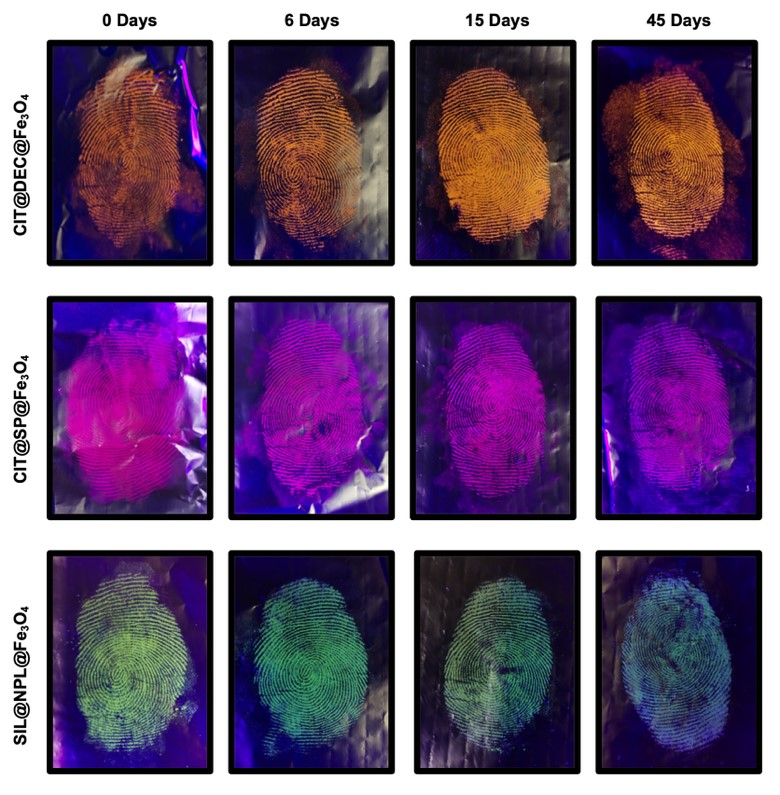Mechanosynthesis of fluorescent magnetic microparticles redefine latent fingerprint detection

Prof. Vasco Bonifácio (DBE, iBB), Hélio Barros (iBB) and collaborators from FCT-NOVA University of Lisbon and Hovione FarmaCiencia reported in Journal of Photochemistry & Photobiology A: Chemistry a fully solvent-free mechanosynthesis route to produce solid-state fluorescent magnetic microparticles (FMMPs). By tailoring silica, trisodium citrate, and chitosan matrices, the team achieved adjustable sensitivity and specificity for latent fingerprint detection on porous, non-porous, and multicoloured substrates. The dual fluorescent–magnetic functionality delivers high-contrast ridge visualization without dust scattering, while non-adherent particles can be magnetically retrieved and reused. Remarkably, these FMMPs retain their performance under extreme conditions—temperatures up to 150 °C, 20-day water immersion, up to 45-day aging, and sequential depositions—thanks to a mechanosynthesis protocol that mitigates Fe₃O₄-induced fluorescence quenching. Boasting an excellent safety profile, biodegradability, cost-effectiveness, and sustainable production, these microparticles mark a significant leap forward for forensic fingerprint detection, marrying green chemistry with advanced material design. See more.
